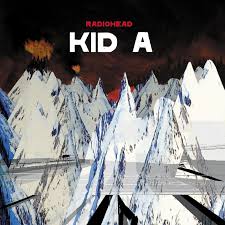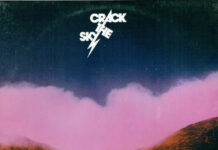In 1997, the angst-riddled bunch, RADIOHEAD, released ”OK Computer,” the first in a series of landmark albums, which has later been tagged as the ”Dark Side of the Moon” of 1990s indie rock. Whether this description hits home or not, the album was – and still is – a poignant masterpiece capturing the pre-millennial tension of the era. The hordes of accolades ”OK Computer” attracted already at the time of its release proved to be a slightly traumatic experience for the band. In retrospect, it seems that RADIOHEAD was suddenly enveloped by a thick, penetrating fog of fear to become just another fat, rich, and lazy bunch of corporate rockers. About a year later, RADIOHEAD reached a low point and almost disbanded. We have seen this same old storyline play out countless times in the history of pop and rock music; sometimes you simply need to touch rock bottom in order to know which way is up.

In October 2000, the band returned with their fourth studio album titled ”Kid A,” on which they had reinvented themselves as the pioneers of eclectic rock, layering traditional rock-oriented songcraft with ambient, jazz, post-rock, and oddball electronica inspired by the leftfield artists in Warp label’s roster. As far as the album’s lyrics were concerned, vocalist Thom Yorke had pushed out of his comfort zone by assembling many of ”Kid A’s” lyrics using a specific cut-up technique, in which a written text is cut up and rearranged. The concept can be traced to the Dadaists of the 1920s and it was popularized in the 1950s by author William S. Burroughs. At face value, the album could have radiated with the aura of trying maybe a little too hard, but RADIOHEAD‘s almost neurotic eagerness to shed their skin paid off in the end. Now, 20 years later, the album’s reputation as a landmark is well entrenched. It stepped off the map with reckless abandon. Yes, it’s quite a strange collection of songs for a rock album, but the songwriting is so phenomenal that the strangeness only increased its appeal. It’s hard to pick a track that stands out because, in a way, they all do.
The album opens with the iconic 3-bar synth motif that consists of two full bars of 4/4 and a bar of 2/4, played on the legendary vintage synth, Prophet 5. The song ”Everything in its Right Place” has been denounced as the defining moment when RADIOHEAD discarded the limitations of being an alt-rock band singing praise to creeps and embraced the world of glitchy creepiness with wanton zeal themselves. Yorke‘s digitally manipulated vocals resonate with quite strong Warp vibes. Coming to think of it, Aphex Twin‘s phenomenal, ”eerie lounge-porn music” piece ”Windowlicker” was released at the time of ”Kid A’s” making. You can certainly hear a somewhat kindred spirit at work here. In 2020, this sort of digital-dub alien transformation is an inherent tool in EDM artists’ style palette, but 20 years ago it was something out of the ordinary. We adolescent music nerds with an acquired taste for anything weird were drunk with excitement, others maybe not so much. With the advent of ”Kid A,” RADIOHEAD‘s fame as a band the haters loved to hate intensified a notch, no doubt.
Two tracks sound particularly haunting: ”How to Disappear Completely” and ”Treefingers.” The first-mentioned is an acoustic number with a string arrangement that channels both the ghost of Polish composer Krzysztof Penderecki and The Moody Blues. Lyrically, the song is eerily reminiscent of Tori Amos‘ ”Cornflake Girl,” although I’m pretty sure both lyrics were inspired by distinctively different things. Some sources claim that RADIOHEAD‘s song was named after a mid-1980s book by Doug Richmond, titled How to Disappear Completely and Never Be Found. It was some sort of how-to guide on starting a new identity. So maybe the song was a tell-tale sign of how badly the band was in need of a new direction. ”Treefingers” is basically the band’s guitarist, Ed O’Brien, adjusting his digitally processed guitar loops with somewhat Brian Eno-ish ambient settings. The track is three-something minutes of sheer ethereal beauty – a track which would feel out of place on pretty much any rock album, except ”Kid A.”
”National Anthem,” in turn, stands out for its magnificent Charles Mingus-inspired brass chaos that sounds like the song was caught in a traffic jam. In a true free-jazz fashion, each horn in the brass section is playing a solo to the iconic bass-riff that’s played by frontman Thom Yorke, who wrote the riff at age 16. The hook or ”catch” in the song is the way the jazz-horns are interpolated against the repetitive, krautrock-ish bassline. The song also features Ondes Martenot, which is an early electronic musical instrument with a signature ”wavering” sound somewhat similar to a theremin.
One more track, ”Idioteque,” deserves a special mention. The song was probably the most radical departure from RADIOHEAD‘s earlier sound with its knotty, electronic beats and lyrics that oozed paranoia induced by the digital age of technology and global warming in globules of rancid sweat. The song kind of suggests that we’re nothing but a bunch of idiots dancing the last gavotte in the ballroom of the Titanic just few minutes before hitting the iceberg with the ass-backward attitude – après nous le déluge.
Undoubtedly, ”Kid A” might have got the band’s fans more worried than they were willing to admit, at first. At the end of the day, however, the album silenced the sarcastic carpings of the critics and haters with a genuine tour-de-force selection of songs like you’d never heard before.
Written by Jani Lehtinen
Tracklist
- Everything In Its Right Place
- Kid A
- The National Anthem
- How To Disappear Completely
- Treefingers
- Optimistic
- In Limbo
- Idioteque
- Morning Bell
- Motion Picture Soundtrack
- Untitled
Lineup
Thom Yorke – vocals, guitar, piano, keyboards
Jonny Greenwood – guitar, keyboards, Ondes Martenot, orchestral arrangements
Colin Greenwood – bass
Ed O’Brien – guitar, effects, backing vocals
Philip Selway – drums, percussion
Label
XL Recordings
Links
www.radiohead.com
https://www.instagram.com/radiohead/
Recent posts
[recent_post_carousel design=”design-1″]





